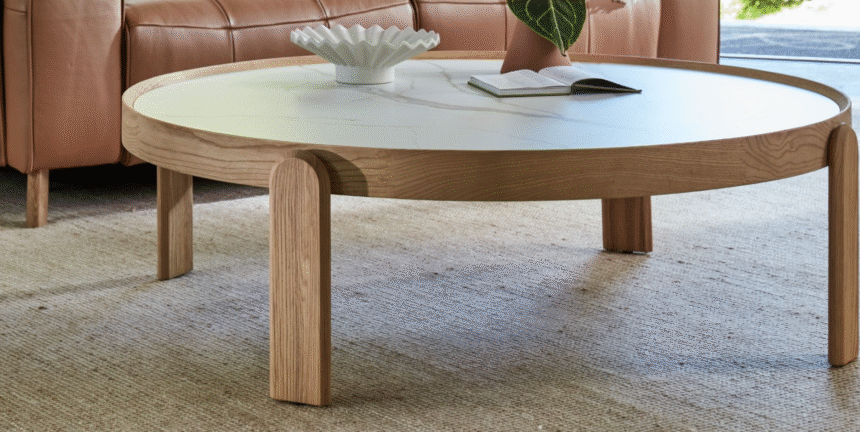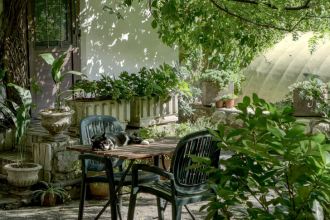Introduction
The coffee table is more than just a piece of furniture; it serves as the central hub of your living room, balancing aesthetics and functionality while setting the tone for your space. Whether you’re sipping morning coffee, hosting gatherings, or simply relaxing with a book, the perfect coffee table can significantly enhance your living environment. This comprehensive guide will walk you through every aspect of choosing a coffee table that not only complements your décor but also meets your practical needs.
Understanding the Importance of a Coffee Table
Defining the Role
A coffee table acts as a bridge between seating arrangements, creating a focal point in your room. It provides a surface for decorative items, reading materials, and everyday essentials like remote controls and beverages.
Enhancing Social Interactions
Coffee tables facilitate conversation by encouraging people to gather around them. They offer a convenient spot for guests to place their drinks, making them integral to social settings.
Reflecting Personal Style
Your choice of coffee table can express your personality and taste. Whether you prefer sleek modern designs or rustic charm, this piece of furniture can be tailored to reflect your individual style.
Determining the Right Size and Shape
Measuring Your Space
Before purchasing a coffee table, measure the space where it will reside. Ensure that there is enough room for movement around it, typically allowing 18 inches between the table and surrounding furniture.
Choosing an Appropriate Shape
– Rectangular: Best suited for longer sofas or large sectional arrangements.
– Square: Complements rooms with ample space and symmetrical seating.
– Round/Oval: Ideal for smaller spaces or rooms with children, minimizing sharp edges.
Proportional Considerations
The height of your coffee table should generally align with the height of your sofa cushions or be slightly lower to maintain visual harmony.
Selecting Materials and Finishes
Wood Options
Wooden tables exude warmth and are available in various finishes like oak, walnut, or cherry:
– Solid Wood: Offers durability but may require regular maintenance.
– Veneers: Provide a wood look at a lower cost but can be prone to chipping.
Glass Tables
Glass offers a modern aesthetic and enhances light flow within the room:
– Tempered Glass: Safer option due to its strength and shatter-resistance.
– Frosted Glass: Adds an element of privacy by obscuring items underneath.
Metal Choices
Metals such as steel or brass add industrial flair:
– Stainless Steel: Resilient against stains and scratches.
– Brass: Offers vintage appeal but requires polishing to maintain shine.
Mixed Materials
Combining different materials like wood tops with metal bases can create visually striking contrasts.
Balancing Style with Functionality
Storage Solutions
Consider tables with built-in storage options such as shelves or drawers to minimize clutter:
– Lift-top Tables: Provide hidden storage while offering an elevated surface.
– Nested Tables: Offer flexibility by allowing smaller tables to be tucked away when not in use.
Multi-functional Designs
For compact spaces, look for tables that double as additional seating or extendable dining surfaces.
Considering Your Room’s Layout
Open Plan Living Areas
For open-plan spaces, opt for larger tables that anchor the room without overwhelming it:
– Position near couches or between distinct areas like dining and living zones.
Small Apartments
In limited spaces, choose minimalist designs that maximize utility without occupying too much visual space:
– Clear glass or acrylic tables create an illusion of openness.
Exploring Different Coffee Table Types
Traditional Coffee Tables
These classic designs often feature ornate detailing and rich wood finishes suitable for conventional interiors.
Modern Minimalist Tables
Characterized by clean lines and simple forms, these tables fit seamlessly into contemporary spaces:
– Opt for monochromatic color schemes or subtle geometrical shapes.
Rustic Farmhouse Styles
Embrace natural textures with reclaimed wood and distressed finishes that evoke cozy countryside vibes:
– Pair with soft textiles like knitted throws for added warmth.
Industrial Chic Designs
Utilize raw materials such as metal frames combined with wooden tops for urban appeal:
– Suitable for loft-style apartments or renovated warehouses.
Customizing Your Coffee Table Choice
Personal Touches
Customizing allows you to tailor aspects such as size, color palette, or additional features according to personal preferences:
– Consult interior designers specializing in bespoke furniture for unique pieces.
DIY Options
If you’re creatively inclined, consider refurbishing vintage finds or constructing your own table using sustainable materials:
– Use online tutorials or workshops hosted by retailers like Home Kode for guidance on DIY projects.
Integrating Trends and Timeless Designs
Current Trends
Stay updated on emerging styles like two-toned finishes or asymmetrical shapes which infuse dynamism into traditional settings:
– Incorporate bold colors selectively as accent pieces rather than main components to ensure longevity.
Timeless Classics
Investing in timeless designs ensures longevity that transcends evolving trends. Opt for neutral tones and classic silhouettes to achieve this enduring appeal.
- Examples include mid-century modern pieces, renowned for their elegant simplicity which has remained stylish for decades.
By adhering to this guide, carefully curated through expert insights from the home furnishing industry and practical recommendations derived from real-world interior design scenarios globally, selecting an ideal coffee table becomes a more manageable process. It transforms into an opportunity to showcase individuality while enhancing the functional aesthetics of any living area.















